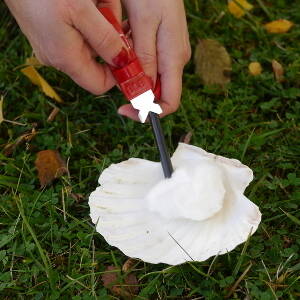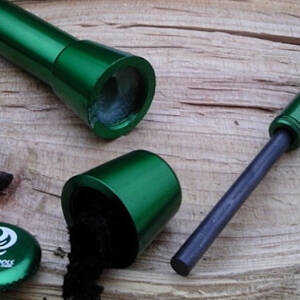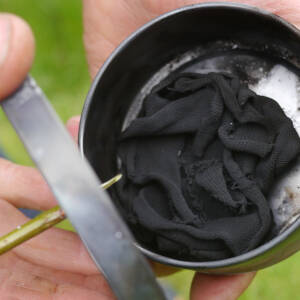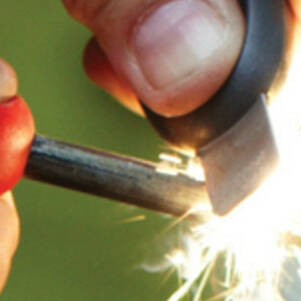Fires: traditional flint & steel
Both simple and complicated at the same time - here’s the what & how of flint & steel fire lighting.
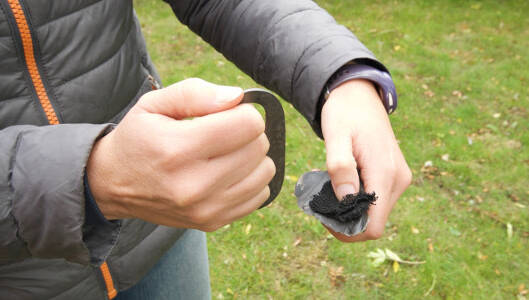
Introduction
Exploring different methods of fire lighting is fascinating; here we use a flint (piece of rock) and strike it with metal to create sparks. Simple and complicated at the same time – fascinating!
From the Iron Age forward, until the friction match was invented, the use of flint and steel was the most common method used to light fires.
The sharp edge of the flint is used to strike the fire steel at an acute angle in order to cleave or shave off small particles of metal. The pyrophoricity (liability to ignite spontaneously on exposure to air) of the steel results in the shavings oxidising in the air. The molten, oxidizing shavings ignite and this burning is the spark.
The spark lands on the char cloth held above the impact area, which creates an ember that can then be used as an ignition for fire lighting.
What you'll need
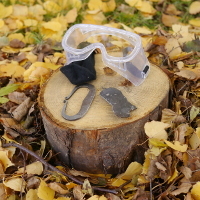
This activity has been provided by

Useful items from our shop
- Char Cloth Piece
- Flint Piece
- Junior Safety Goggles
- Traditional Flint and Steel Set
- Traditional Metal Hand Striker
- Aluminium Fire Piston
- Bow Drills
Environmental Considerations
Consider the environmental impact of preparing, carrying out & completing this activity. Could this impact be reduced? Specific considerations for this activity could include:
- ensure all fires are extinguished
- leave no trace if appropriate to your situation
Health & Safety Considerations
Follow your usual operating procedures and carry out appropriate risk benefit assessments.
Some considerations particular to this activity include:
- striking flint will cause tiny shards to fly off – we strongly recommend that you wear safety goggles
- to avoid catching the sharp flint edge, correctly position your knuckles
- avoid sparks landing on anything flamable such as clothing
- char cloth embers burn hot
Preparation:
- traditional hand steel (you may be able to find an old one second hand)
- piece of flint large enough to hold securely
- char cloth – see our how to make char cloth activity to make your own
- kindling tub/bag – to keep char cloth and tinder dry
- goggles
NB: do not store your steel with the char cloth.
What is a good steel fire striker?:
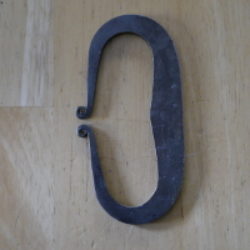
The type and hardness of steel used is very important. The steel must be hardened but softer than the flint-like material scraping off the spark. High carbon steels generate sparks easily, iron and alloys such as stainless steel do not.
Recycled materials, such as old garden tools and hand tools, are often used as strikers.
What is flint?:
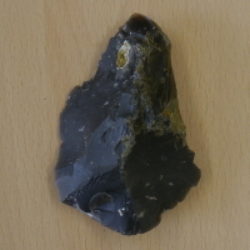
Flint is a hard, sedimentary cryptocrystalline form of the mineral quartz. It occurs mostly as nodules in sedimentary rocks, such as chalks and limestones. Inside the nodule the flint is usually dark grey, black, green, white or brown in colour, and often has a glassy or waxy appearance.
What is char cloth?:
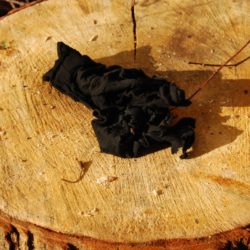
Char cloth is made from organic material like linen or cotton jute. It is made by exposing the material to very high temperatures in the absence of oxygen; this process prevents the material from being burned up completely.
Char cloth is slow burning and has a very low ignition temperature and is therefore highly combustible.
Making your own char cloth is an interesting activity.
Storage:
Don’t store char cloth and steel together.
When flint and steel were used in the past, the fire steel was often kept in a metal tinderbox, together with flint and tinder.
How to use a traditional flint and steel:
Instructions by www.woodlandsurvivalcrafts.com
Dave Watson of Woodland Survival Crafts runs a range of bushcraft courses; many exploring different aspects of fire lighting. We would like to thank Dave for helping us to develop our traditional flint and steel set and providing these instructions on how to use it.
Introduction:
The use of metal against flint has been the mainstay of fire lighting techniques in Europe for at least two thousand years. It is a skill, like many others, that seems simple in theory but requires an understanding and technique.
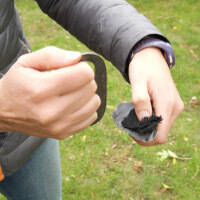
Step #1
Hold the flint in your hand with the main edge slightly angled upwards.
Place a piece of char cloth on top of the flint, about 1cm back from the edge, and hold under your thumb. Try to avoid too much handling of the char cloth.
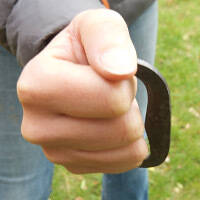
Step #2
Hold the steel firmly as shown.
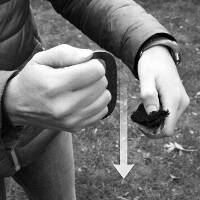
Step #3
Strike the flint with a short but clear downwards flicking action. The bulk of the sparks should fly upwards onto the cloth.
Avoid fast repeated strikes as this will blunt the flint quickly. A confident strike is more likely to succeed in catching onto the tinder and creating an ember.
Once an ember is created fold the char cloth over and place it into a bundle of kindling, blowing gently to encourage the kindling to ignite.
Top tips:
Char cloth is very absorbent, even small amounts of moisture or sweaty fingers can reduce the efficiency. Placing the char cloth in a warm pocket or in sunshine for a few minutes will increase the chances of a spark taking.
General Maintenance:
After a while the steel edge will start to become rough. Run it up and down a coarse sharpening stone to bring it back to a smooth finish. The flint will, for a while, keep creating new little edges as it being used. In time you will need to either break off a new main edge or find another piece of flint.
Take it further:
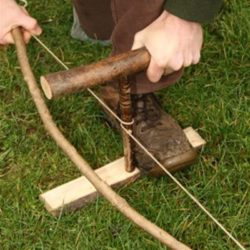
- explore different fire lighting techniques such as bow drills and fire pistons. or make your own char cloth.
- Look at our how to use a fire steel activity.
Disclaimer: Muddy Faces cannot take any responsibility for accidents or damage that occurs as a result of following this activity.You are responsible for making sure the activity is conducted safely.
Key Features
- Age Range 6+
- Duration Less than an hour
- Location Anywhere
- Season Any
- Time of Day Anytime
-
Categories:
Fire, Shelters & Bushcraft
fire
